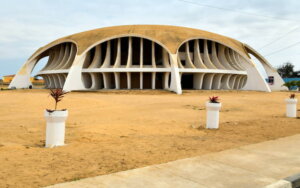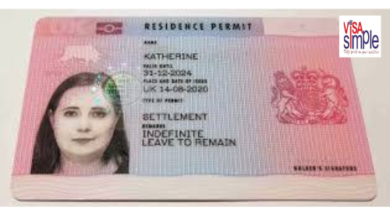Immerse yourself in Angola’s culture by touring its museums

Angola is a culturally rich, historical and heritage-filled country in the west coast of Southern Africa. In addition to its natural sceneries and wildlife parks, Angola can be a very enriching cultural experience to travelers interested in knowing more about its history, its culture, and its art. Angola museums are the treasure chests, which keep its varied history including the tales of the ancient kingdoms and the contemporary independence movements. These museums are not merely places to show artifacts but take one to the very depth of Angolan soul.
As more people become interested in African tourism, Angola is slowly becoming one of the most preferred destinations by culture lovers. When you are Angola Visit Visa or Angola Tourist Visa, you must include museums in your travel plan to have a full cultural experience. The museums all have different stories and in them, the visitors are able to witness the experience of Angola as it went through colonization, civil war and into peace and development. This guide will present you with some of the most outstanding museums in Angola and why you should visit them during your tour.
Here are some of the ways to immerse yourself in Angola’s culture by touring its museums.
1. National Museum of Anthropology -A Plunge into the Ethnic Diversity of Angola
The National Museum of Anthropology, situated in the capital city Luanda, is among the most popular and most culturally diverse museums in Angola. It offers a unique show of ethnic diversity of Angola in form of traditional tools, musical instruments, religious items, and attires worn by various tribes. The life-sized models of the daily village life that the museum offers enable the tourists to get a clue about how the Angolans have been living centuries.
2. National Slavery Museum -Dealing with a Bitter History
The other important cultural venue is the National Slavery Museum (Museu Nacional da Escravatura) in Morro da Cruz, outside Luanda. Housed in the old slave trader residence, this museum is a poignant and impactful journey through the dark past of Angola, during the transatlantic slave trade. There are displays of chains, branding tools and the holding pens where slaves were kept prior to being transported to the Americas.
3. National Museum of Military History – The Road to Independence of Angola
The National Museum of Military History is housed in the Fortress of Sao Miguel in the Angolan capital of Luanda, and gives its visitors a detailed account of the Angolan fight to independence and the post-independence civil war. The way of Angola to become a sovereign state is moving and complicated, and this museum tells this story using documents, military equipment, uniforms, and photos.
4. Dundo Museum – Native Art and Folklore at the Center of Lunda Norte
The Dundo Museum, in the Lunda Norte Province, far away form the capital, holds an impressive array of traditional Chokwe art. Wooden sculptures, ceremonial masks, musical instruments, and tools are exhibited in this museum, which reveals the richness of the Chokwe culture, that is, one of the major ethnic groups in Angola.
5. Museum of Natural History the Biodiversity of Angola on Exhibition
The Museum of Natural History in Luanda has a wide variety of collection to offer to tourists who wish to have a glimpse of the wildlife and the natural ecosystems in Angola. There are exhibits of stuffed specimens of native mammals, birds, fish, reptiles and even insects. There are also geological exhibits in the museum showing the abundant mineral resources of Angola in form of diamonds and oil.
6. Iron Palace (Palacio de Ferro) – Masterpiece of the Historical Architecture
The Iron Palace in Luanda, although not a conventional museum, is an architectural monument, representing Angola colonial and artistic past. This is a 19 th -century prefabricated building designed by Gustave Eiffel, the architect of the Eiffel tower, which was constructed completely using iron and subsequently shipped to Luanda where it was assembled.
7. Museum of the Armed Forces- Tribute to National Heroes
Another highlight found in the São Miguel Fortress is the Museum of the Armed Forces. Whereas the National Museum of Military History concentrates on historic events, this museum concentrates on the courage and leadership of the national heroes of Angola. Tourists learn about the people who were instrumental in the development of modern Angola through portraits, biographies, and video presentations.
8. Museum of the Revolution – Ideological Awakening of Angola
The Museum of the Revolution provides us with knowledge of ideological and intellectual trends that stimulated the liberation of Angola. The museum also hosts documents, manifestos and photographs of the revolutionary leaders and is thus a perfect place to visit when one is interested in sociology, politics and the study of Africa.
Conclusion:
Exploring Angola through its museums offers much more than sightseeing—it provides a gateway into the heart and soul of a resilient nation. From the colorful traditions of its ethnic groups to the painful yet important reminders of its colonial and slave-trade past, Angola’s museums offer layered narratives that educate, inspire, and transform. Travelers with an Angola Visit Visa or are not just visiting physical locations but are embarking on a journey of cultural awakening.
These establishments show how Angola has managed to embrace its traditions and move on to a modernity. By experiencing these things yourself, you get a better idea of the successes, hardships, and expectations of Angola. A history enthusiast, an art admirer, or simply a traveller with inquisitive mind, Angola has museums that are cultural pillars and will give you the impression of a lifetime.




